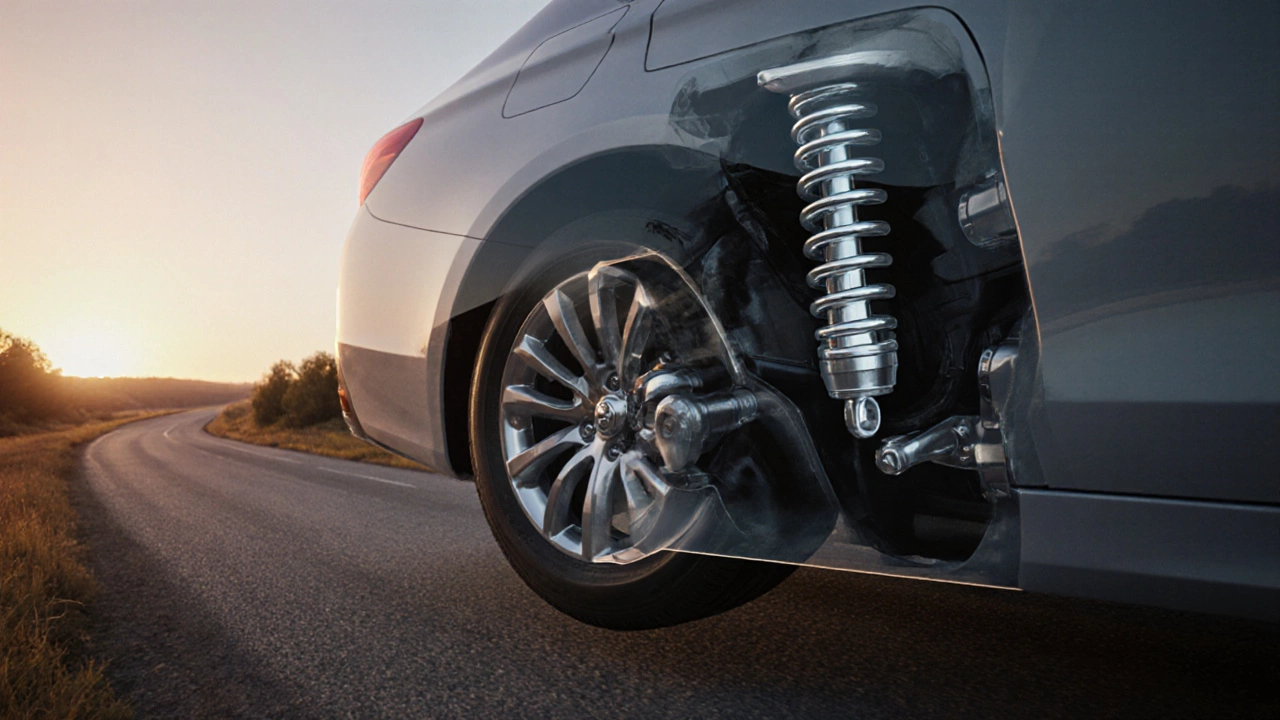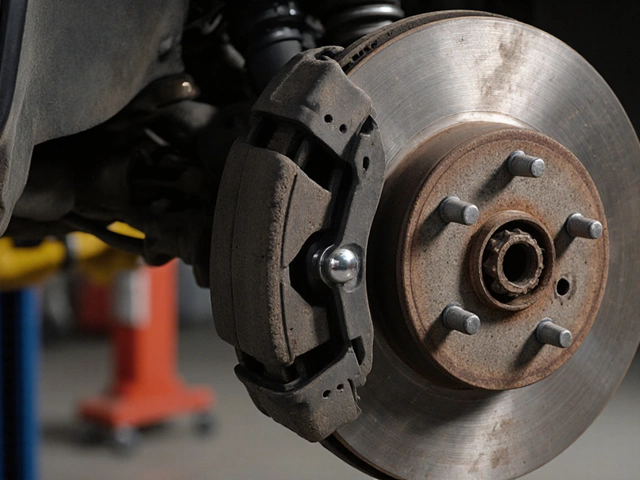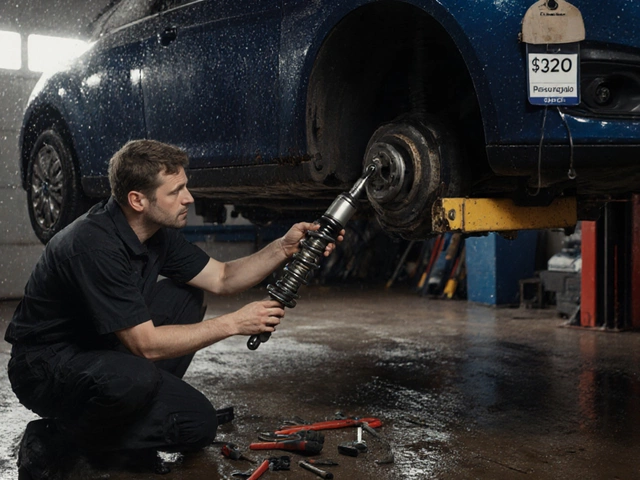When a vehicle’s Vehicle suspension is the system of springs, shock absorbers, and linkages that keep your wheels glued to the road while absorbing bumps starts to fail, the whole driving experience changes. You might notice a wobble during cornering, a thud when you hit a pothole, or a constant shaking that won’t go away. Those sensations are the body’s way of telling you something’s wrong under the chassis. In this guide we’ll break down exactly how a bad suspension feels, why each symptom matters, and what parts are most likely at fault.
Key Ways a Faulty Suspension Manifests
Every driver feels a “bad suspension” differently, but most complaints fall into a handful of recognizable patterns. Below is a quick rundown of the most common sensations and what they usually point to.
- Excessive bounce - The car springs back and forth after hitting a bump, indicating worn-out shock absorbers or struts.
- Side‑to‑side sway during lane changes - Often a sign of deteriorated anti‑roll bar links or loose control arms.
- Clunking or knocking noises - Typically caused by worn bushings, broken ball joints, or a cracked spring.
- Uneven tire wear - When the suspension can’t keep the wheels aligned, tread patterns become irregular.
- Steering wheel vibration at higher speeds - May stem from a failed shock, a broken strut mount, or an out‑of‑balance wheel.
What Each Symptom Says About Specific Parts
Understanding the link between feeling and component helps you prioritize repairs. Here’s a deeper look at the parts that usually cause the listed issues.
- Shock absorber converts kinetic energy from road impacts into heat, controlling spring rebound - If shocks are leaking fluid or have broken pistons, the car will bounce excessively.
- Strut combines a shock absorber with a structural support for the wheel hub - A worn strut can cause clunking when the wheel moves up and down.
- Spring stores mechanical energy and supports vehicle weight - Broken or sagging springs lead to uneven ride height and excessive roll.
- Control arm connects the wheel hub to the chassis and manages camber - Loose arms produce side‑to‑side sway and uneven tire wear.
- Bushing rubber or polyurethane pads that isolate vibration between metal parts - Worn bushings translate metal‑to‑metal contact into clunks.
How to Test Your Suspension at Home
You don’t need a garage lift to get a solid idea of what’s happening. Try these quick checks before you book a mechanic.
- Push‑down test: Stand behind the car, press down on the front or rear bumper, then release. If the car bounces more than once, the shocks or struts are likely worn.
- Visual inspection: Look for leaking fluid on the shock bodies, cracked springs, or torn rubber on the bushings.
- Steering feel: While driving at a steady speed, gently turn the wheel left and right. Excessive play or a loose feel points to a worn control arm or ball joint.
- Tire tread check: Examine the tread depth across the width of each tire. Significant differences (more than 2 mm) often indicate alignment or suspension issues.
- Road test: Drive over a speed bump or a small pothole at low speed. Note whether the car rocks, shudders, or feels smooth - the reaction tells you which component is absorbing the impact.
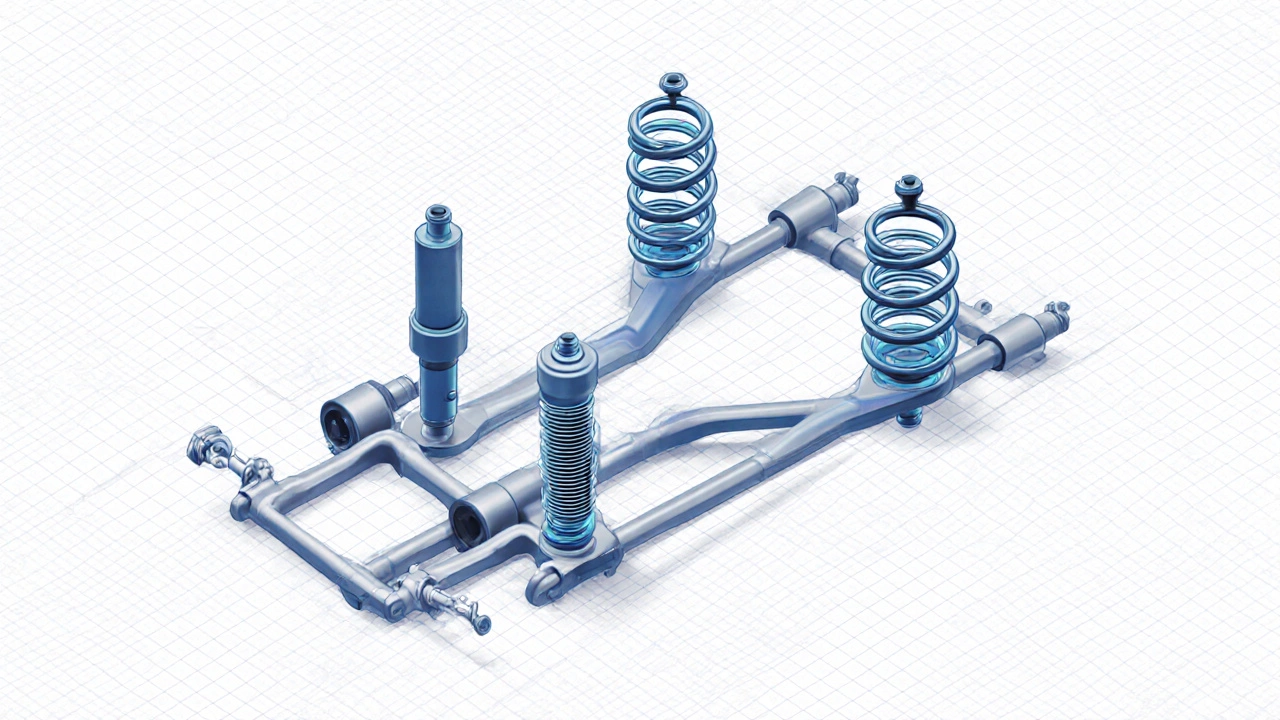
When Bad Suspension Mimics Other Problems
It’s easy to confuse suspension symptoms with brake, steering, or tire problems. Here’s a quick cross‑check so you don’t chase the wrong fix.
| Symptom | Likely Suspension Cause | Possible Non‑Suspension Cause |
|---|---|---|
| Vibrating steering wheel at 60 mph | Worn shock absorber or strut mount | Unbalanced wheels or brake rotor warping |
| Car pulls to one side | Misaligned control arm or broken bushing | Uneven tire pressure or brake caliper drag |
| Clunking when going over bumps | Broken spring or loose anti‑roll bar link | Loose exhaust component or CV joint |
| Excessive bounce after a pothole | Failed shock absorber | Worn tires or low tire pressure |
| Uneven tire wear | Faulty suspension geometry | Improper tire rotation schedule |
Cost Considerations and Maintenance Tips
Fixing a bad suspension can range from a quick fluid top‑up to a full component replacement. Here’s a realistic breakdown based on UK pricing in 2025:
- Shock absorber replacement: £120 - £250 per corner (including labor).
- Strut assembly (including spring): £250 - £450 each.
- Control arm bolt‑on kit: £80 - £150 per side.
- Bushing replacement (front): £60 - £130.
- Full suspension overhaul (all four corners): £1,200 - £2,500.
Regular maintenance can stave off many of these expenses. Keep an eye on fluid leaks, replace worn bushings before they crack, and schedule a suspension inspection at least once every 20,000 km or when you notice any of the symptoms above.
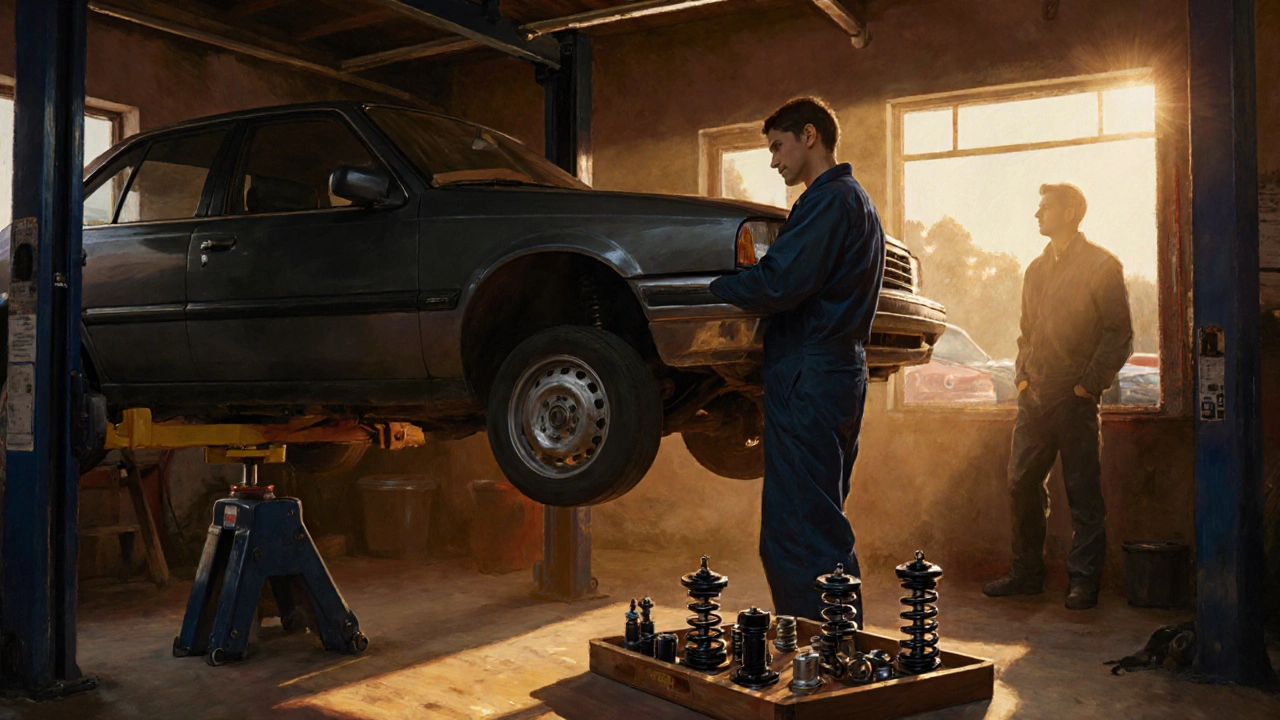
DIY vs. Professional Repair - When to Call the Experts
Some checks are safe for a DIY enthusiast, but many suspension parts require special tools and safety equipment. Here’s a quick guide:
| Task | DIY Feasibility | When to See a Pro |
|---|---|---|
| Visual fluid leak inspection | Easy - no tools needed | Never |
| Shock absorber push‑down test | Easy - just your hands | Never |
| Replacing front bushings | Medium - requires press | If you lack a press or lift |
| Strut assembly swap | Hard - needs spring compressors | Always unless you have professional gear |
| Full alignment after suspension work | Impossible - needs alignment rack | Mandatory |
In short, if the symptom points to a simple visual issue or a basic fluid check, you can handle it. Anything involving spring compression, precise torque specs, or wheel alignment belongs in a qualified shop.
Bottom Line - Spotting a Bad Suspension Early Saves Money and Keeps You Safe
When you feel the car shudder, dip, or sway, it’s not just a comfort issue - it’s a warning that the suspension is losing its grip on the road. By learning the hallmark sensations, performing quick home tests, and knowing which part is most likely at fault, you can act before a small problem turns into a costly repair or a dangerous drive.
Remember, the most common bad suspension symptoms are excessive bounce, clunking noises, uneven tire wear, and steering vibration. Spot them early, get a proper diagnosis, and you’ll keep your ride smooth, safe, and budget‑friendly.
Why does my car bounce more after hitting a pothole?
A bounce usually means the shock absorbers or struts can’t dampen the spring’s recoil. When the fluid inside a shock leaks or the piston wears out, the spring’s energy isn’t absorbed, so the wheel continues to move up and down.
Can worn bushings cause a steering wheel knock?
Yes. Bushings isolate metal components; when they degrade, the metal‑to‑metal contact creates a knock that you feel through the steering column, especially over bumps.
Is uneven tire wear always a suspension problem?
Not always. While mis‑aligned suspension geometry is a top cause, low tire pressure, incorrect wheel alignment, or worn tires themselves can also produce uneven wear. A full alignment check will pinpoint the root cause.
How often should I have my suspension inspected?
A good rule of thumb is every 20,000 km or whenever you notice any of the listed symptoms. If you frequently drive on rough roads, add an extra inspection annually.
Can I replace a shock absorber myself?
Yes, if you have the right tools - a jack, stands, and a wrench set. However, you’ll need a torque wrench for proper tightening and a way to safely compress the spring if you’re also dealing with struts. If in doubt, let a professional handle it.
